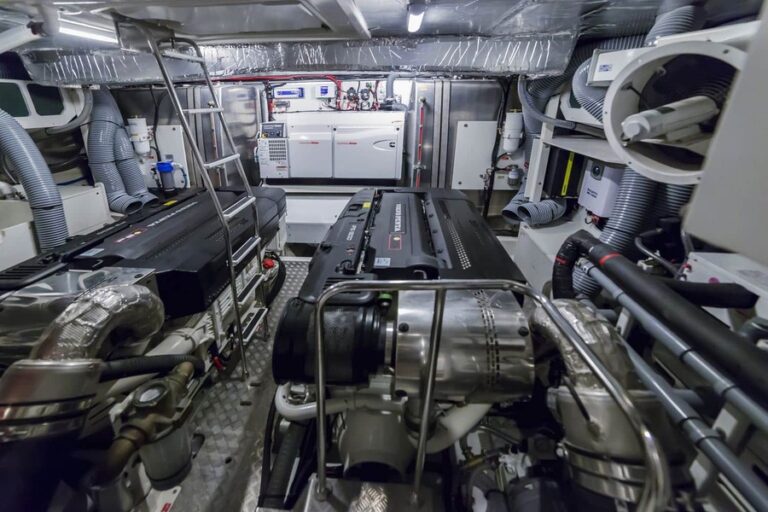Introduction
Marine engines, like any internal combustion engine, generate substantial heat during operation. In the confined environment of a boat, this heat must be managed effectively to maintain performance, prevent mechanical damage, and ensure safety on the water. Unlike cars or trucks that rely on air to cool radiators, boats are surrounded by water—an abundant and efficient cooling resource. As such, marine cooling systems are specifically designed to utilize this water to regulate engine temperature. Whether navigating freshwater lakes or harsh saltwater seas, a reliable cooling system is vital to keeping marine engines running efficiently. This system not only protects the engine from overheating but also plays a crucial role in maintaining its overall health and longevity.
Types of Boat Cooling Systems
Raw Water Cooling System
- How it works: Water is drawn directly from the surrounding body (sea, river, or lake), pumped through the engine, absorbs heat, and then is discharged overboard.
- Advantages:
- Simple design with fewer components.
- Lower initial cost.
- Disadvantages:
- Saltwater causes rapid corrosion inside the engine.
- Debris, sand, or marine growth can clog passages.
- Not suitable for cold climates (risk of freezing).
- Typical Use: Smaller boats or freshwater environments.
Fresh Water Cooling System (Closed-Loop)
- How it works: A mixture of water and antifreeze (coolant) circulates within the engine block. Heat from the engine is transferred to a separate raw water stream via a heat exchanger.
- Advantages:
- Better corrosion protection (especially in saltwater).
- Allows use of antifreeze with rust inhibitors.
- Suitable for winterization and long-term reliability.
- Disadvantages:
- More complex and expensive.
- Requires additional components like a heat exchanger and coolant pump.
- Typical Use: Larger boats, saltwater vessels, and high-performance engines.
Key Components of Boat Cooling Systems
Sea Water Pump (Raw Water Pump)
- Draws water from the ocean/river into the system.
- Usually impeller-driven, located near the engine.
- Needs regular inspection; rubber impellers can wear out.
Heat Exchanger
- Functions like a car radiator but uses raw water instead of air.
- Transfers heat from the engine’s coolant to raw water, which then carries it away.
- Made of corrosion-resistant materials like copper-nickel or stainless steel.
Thermostat
- Regulates the engine’s operating temperature.
- Ensures the engine reaches and maintains optimal heat levels for efficiency.
Coolant Circulating Pump
- Pumps coolant through the engine’s water jackets and heat exchanger.
- Keeps coolant moving continuously to avoid hot spots and overheating.
Exhaust Manifold Cooling
- Cools exhaust gases to prevent overheating and fire risk.
- In water-cooled manifolds, raw or freshwater passes through the manifold jackets before being expelled with exhaust gases.
Importance of a Proper Boat Cooling System
- Prevents Engine Overheating: Avoids breakdowns and permanent engine damage.
- Improves Efficiency: Proper temperature management leads to better fuel combustion and less wear.
- Protects Components: Minimizes corrosion and scaling, especially important in saltwater conditions.
- Ensures Safety: An overheated engine can pose a safety risk, including fire hazards in extreme cases.
- Extends Engine Life: Engines that operate within the correct temperature range last longer with fewer maintenance issues.
Conclusion
The cooling system is one of the most essential components of a boat’s engine setup. Whether using a raw water system for simplicity or a closed-loop system for better corrosion resistance and reliability, the ultimate goal remains the same: to prevent engine overheating and ensure smooth operation. Each part of the system—from the seawater pump to the heat exchanger—works in tandem to maintain a stable engine temperature in demanding marine conditions. Regular maintenance, proper inspection of components, and choosing the right cooling system based on the environment and usage are critical steps toward maximizing the life and performance of a marine engine. In essence, a well-designed and well-maintained cooling system is key to safe, efficient, and enjoyable boating.

